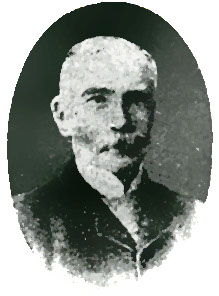William Gowland facts for kids
Quick facts for kids
William Gowland
|
|
|---|---|

William Gowland
|
|
| Born | 16 December 1842 Sunderland, County Durham, England
|
| Died | 9 June 1922 (aged 79) London
|
| Nationality | English |
| Occupation | metallurgist, amateur archaeologist, foreign advisor to Japan |
| Known for | Foreign advisor to Meiji Japan |
William Gowland (born December 16, 1842 – died June 9, 1922) was an English engineer who loved to explore ancient sites. He did important archaeological work in both Japan and at the famous Stonehenge in England. Many people call him the "Father of Japanese Archaeology" because of his amazing discoveries there.
Contents
Early Life and Education
William Gowland was born in Sunderland, a town in northern England. He went to special schools like the Royal College of Chemistry and the Royal School of Mines. There, he learned all about metallurgy, which is the science of working with metals.
After his studies, he worked as a chemist and a metal expert for a company. But in 1872, when he was 30 years old, something exciting happened. The Japanese government asked him to come to Japan as an expert advisor.
Working in Japan: A New Adventure (1872–1888)
Gowland arrived in Osaka, Japan, in October 1872. He was hired to help modernize Japan, which was a big goal for the Meiji government at the time. He worked at the Japan Mint, which is where coins are made.
He taught new ways to analyze metals and how to make bronze and copper alloys for coins. He also brought in modern machines, like special furnaces, to make metal refining more efficient. His skills were so good that he even helped the Japanese Army set up a factory to make artillery.
In 1883, the Japanese government honored him with a special award called the Order of the Rising Sun. This award showed how much they appreciated his hard work.
Exploring Japan's Mountains and Ancient Sites
When he wasn't working, Gowland loved to go mountain climbing. He was one of the first foreigners to climb many peaks in the Japanese Alps. In fact, he was the one who gave the name "Japanese Alps" to these mountains! He even claimed to be the first foreigner to climb Mount Yarigatake in 1874.
But Gowland is most famous in Japan for his hobby: archaeology. He was an amateur archaeologist, meaning he did it for fun, but he was very good at it. He was the first to do truly scientific studies of many ancient burial mounds, called kofun. These mounds were built between the 3rd and 7th centuries AD and some were even for emperors.
He dug at sites all over Japan, finding many important clues about ancient Japanese history. When he left Japan in 1888, he received another award and a bonus from the government. He brought many ancient artifacts back to England and gave them to the British Museum. He also collected beautiful Japanese paintings.
Uncovering Secrets at Stonehenge
After returning to England, Gowland continued his archaeological work. In 1900, a large stone at Stonehenge fell over during a storm. People were worried about the ancient monument.
William Gowland was chosen to help fix the stone and study the area. Even though he didn't have formal archaeology training, he made some of the most detailed records ever at Stonehenge. He carefully dug around a leaning stone to help stabilize it with concrete.
Through his work, he discovered that ancient people used antler picks to dig the holes for the stones. He also found out that the huge stones were shaped right there at the site. His discoveries helped us understand how Stonehenge was built and what materials were used.
Later Life
William Gowland passed away in London on June 9, 1922, when he was 79 years old. He was buried in St. Marylebone Cemetery.
Selected Works
- The Dolmens and other Antiquities of Korea, 1895
- The Art of Casting Bronze in Japan, 1896
- The Dolmens and Burial Mounds in Japan, 1897
- The Dolmens of Japan and their Builders, 1900
- The Burial Mounds and Dolmens of the Early Emperors of Japan, 1907
- The Art of Working Metals in Japan, 1910
- Metals in Antiquity, 1912
- The Metallurgy of Non-ferrous Metals, 1914
- Metal and Metal-Working in Old Japan, 1915
- Silver in Roman and Earlier Times, 1920

